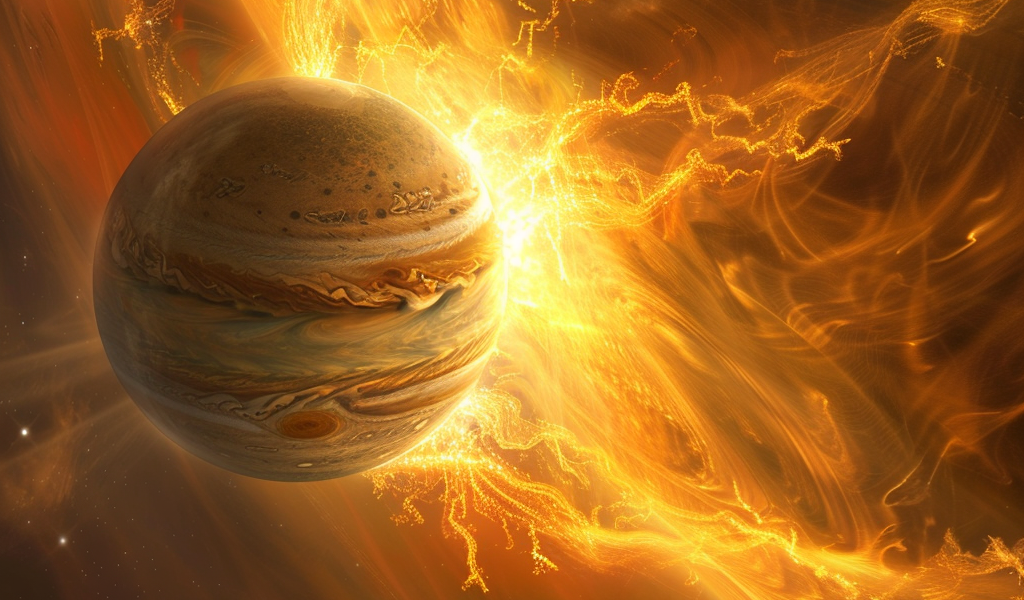Hot Jupiters have long been a fascinating topic in the realm of astronomy, with their close proximity to their parent stars and the mysterious phenomenon of their orbital decay. While Earth takes a leisurely 365 days to complete its orbit around the Sun, these massive exoplanets zip around their stars in less than 10 days, leading to a gradual shrinking of their orbits.
The discovery of the first hot Jupiter in 1995 opened up a new chapter in our understanding of planetary systems, and since then, over 4,000 such exoplanets have been identified by astronomers. However, the underlying reasons for the orbital decay of these celestial bodies remained shrouded in mystery until a recent study by researchers at Durham University.
Through their investigation, the team uncovered the critical role played by gravitational tides and magnetic fields in driving the orbital decay of hot Jupiters. Unlike Jupiter in our solar system, which takes more than a decade to complete a single orbit, these exoplanets are so close to their stars that they complete their revolutions in just a handful of days.
One of the key findings of the study was the influence of a star’s magnetic field on the gravitational tides experienced by hot Jupiters. By examining the case of WASP-12b, a hot Jupiter located over 1,300 lightyears away, the researchers observed the intricate interplay between the planet and its parent star, WASP-12.
According to NASA, WASP-12b is on a collision course with its star, being gradually torn apart as it completes its orbit in a mere 1.1 days. The researchers likened this process to the tidal bulges experienced by Earth’s Sun due to the gravitational pull of its orbiting planets, albeit on a much more extreme scale.
As the inward waves generated by the gravitational tides interact with the magnetic field of the star, they transform into outward magnetic fields that eventually dissipate into space. This magnetic interaction is believed to be a key factor in the orbital decay of hot Jupiters like WASP-12b, shedding light on the fate of these fascinating exoplanets.
The study not only deepens our understanding of the mechanisms driving the orbital decay of hot Jupiters but also highlights the complex interplay between gravitational forces and magnetic fields in shaping the evolution of planetary systems beyond our own solar neighborhood.





